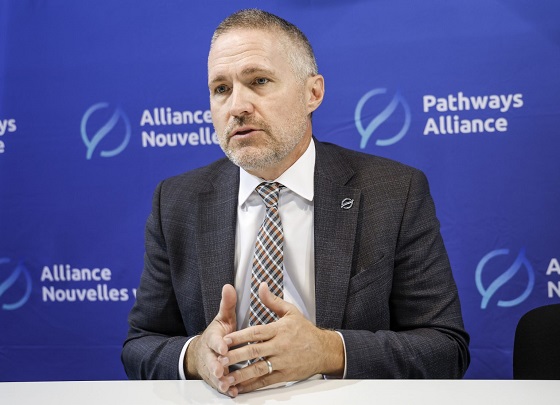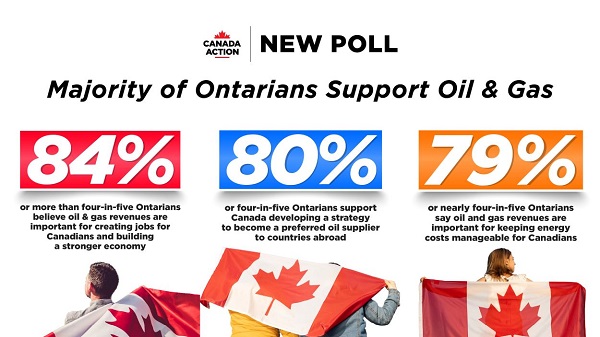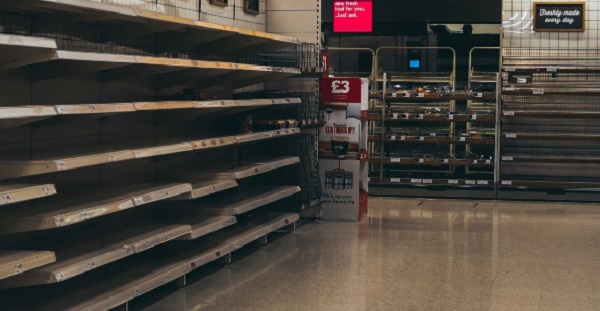Alberta
Tech, sustainability key to attracting young talent to an evolving agriculture sector

Canada’s farmers are getting older, and most don’t have a clear succession plan, leaving a big question over who will take over the agriculture sector as a wave of retirements loom.
But industry insiders say an increased focus on technology and sustainability is helping attract younger generations to agriculture, including those coming to the field for the first time.
Young people entering farming from other industries will be key to the sector’s evolution as it grapples with challenges like climate change, said Todd Klink, chief marketing officer at Farm Credit Canada.
“We’re going to need technology, we’re going to need innovation, we’re going to need new ideas and new approaches,” he said. “So when you meet young people that have these new ideas and come from different disciplines, it’s super exciting.”
The demographics of farm operators show an industry in clear need of rejuvenation, even as the barriers to entry can be daunting.
The average age of a Canadian farm operator was 56 in 2021, according to Statistics Canada, and the median age 58, with both those figures rising from the previous census. More than 40 per cent of those operators plan to retire over the next decade, according to a report from the Royal Bank of Canada, Boston Consulting Group Centre for Canada’s Future and Arrell Food Institute at the University of Guelph.
While some will pass the business on to their children — 12 per cent of farms told Statistics Canada they had a succession plan in 2021 — it’s no easy feat to buy or sell a farm, nor to start one from scratch, due to the high costs of land and equipment, as well as the fact that over time, farms have consolidated and therefore gotten bigger on average.
“Unless you’re inheriting or you’re part of a succession plan for an existing farm … it’s nearly impossible to get into it from the ground up,” said Joy Agnew, vice president of research at the Olds College of Agriculture and Technology in Alberta.
Money isn’t the only barrier for attracting the younger generations into agriculture, said Agnew. There are perceptions that farming is hard, dirty work that makes no money, she said — even though agriculture contains a wide range of jobs that don’t look like stereotypical farm work, and most of them don’t involve buying or inheriting a farm.
But as farms adopt more technology such as automated steering and drones, the college has seen increased interest, she said.
“We’re seeing more and more young people in those very niche technological areas like software development or coding or instrumentation or robotics,” said Agnew. “They’re now seeing careers for themselves in the (agriculture) sector.”
Alongside the technological shift, farmers are increasingly adopting sustainable practices, Statistics Canada says, using practices like cover crops and no-till agriculture in efforts to mitigate climate change.
Younger generations are showing more interest in sustainable practices, including ways to maximize yields from smaller farms that are more financially accessible.
Georges Boudreau and his partner Béatrice Cloutier-Hébert established Ferme La Chaleureuse in Carleton-sur-mer, Que. last year. Using less than two acres, the pair deploy a technique called bio-intensive farming, which focuses on maximizing the yield of a small piece of land. Boudreau learned the technique at La Ferme des Quatre-Temps in Hemmingford, Que., which trains young farmers in addition to growing and selling produce.
Boudreau said while there will always be a need for large farms, he sees growing interest in smaller farms that feed their nearby communities.
“That’s what I think is the future. Less industrial farming and more community and smaller farms.”
And in an effort to grow more local food year-round, there’s another trend set to help fill the gap: indoor farming, whether in greenhouses or vertical farms. The total area of greenhouses in Canada grew by more than 23 per cent in 2021 compared with 2016.
Barry Murchie founded GoodLeaf Farms in 2011 after working in food for several decades, including at McCain Foods for 25 years. GoodLeaf’s production of leafy greens and micro greens is currently centred in Guelph, with facilities in Calgary and Montreal set to open this summer.
Murchie said the technology underpinning vertical farming is allowing for a new kind of agriculture that can take place in urban centres. GoodLeaf’s employees come from a range of backgrounds, with average ages in the 30s, and tend to be concerned about the environment and the food supply chain, he said.
“We have people who are sort of early in their careers making decisions to come and join GoodLeaf,” said Murchie. “They want to work in an environment that they feel that what they’re doing is beneficial for the planet.”
Growing public scrutiny of where food comes from is generating more interest in the agriculture industry among younger generations, said Dustin Farr, an instructor of agriculture management and precision agriculture at the Werklund School of Agriculture Technology, which is part of Olds College.
As a result, Farr said he’s seeing more and more students coming to agriculture from increasingly diverse backgrounds. He says that while he’s well aware of the challenges facing the industry, his students leave him feeling optimistic.
“We have some brilliant minds that are coming into agriculture.”
This report by The Canadian Press was first published May 22, 2023.
Rosa Saba, The Canadian Press
Alberta
Alberta project would be “the biggest carbon capture and storage project in the world”

Pathways Alliance CEO Kendall Dilling is interviewed at the World Petroleum Congress in Calgary, Monday, Sept. 18, 2023.THE CANADIAN PRESS/Jeff McIntosh
From Resource Works
Carbon capture gives biggest bang for carbon tax buck CCS much cheaper than fuel switching: report
Canada’s climate change strategy is now joined at the hip to a pipeline. Two pipelines, actually — one for oil, one for carbon dioxide.
The MOU signed between Ottawa and Alberta two weeks ago ties a new oil pipeline to the Pathways Alliance, which includes what has been billed as the largest carbon capture proposal in the world.
One cannot proceed without the other. It’s quite possible neither will proceed.
The timing for multi-billion dollar carbon capture projects in general may be off, given the retreat we are now seeing from industry and government on decarbonization, especially in the U.S., our biggest energy customer and competitor.
But if the public, industry and our governments still think getting Canada’s GHG emissions down is a priority, decarbonizing Alberta oil, gas and heavy industry through CCS promises to be the most cost-effective technology approach.
New modelling by Clean Prosperity, a climate policy organization, finds large-scale carbon capture gets the biggest bang for the carbon tax buck.
Which makes sense. If oil and gas production in Alberta is Canada’s single largest emitter of CO2 and methane, it stands to reason that methane abatement and sequestering CO2 from oil and gas production is where the biggest gains are to be had.
A number of CCS projects are already in operation in Alberta, including Shell’s Quest project, which captures about 1 million tonnes of CO2 annually from the Scotford upgrader.
What is CO2 worth?
Clean Prosperity estimates industrial carbon pricing of $130 to $150 per tonne in Alberta and CCS could result in $90 billion in investment and 70 megatons (MT) annually of GHG abatement or sequestration. The lion’s share of that would come from CCS.
To put that in perspective, 70 MT is 10% of Canada’s total GHG emissions (694 MT).
The report cautions that these estimates are “hypothetical” and gives no timelines.
All of the main policy tools recommended by Clean Prosperity to achieve these GHG reductions are contained in the Ottawa-Alberta MOU.
One important policy in the MOU includes enhanced oil recovery (EOR), in which CO2 is injected into older conventional oil wells to increase output. While this increases oil production, it also sequesters large amounts of CO2.
Under Trudeau era policies, EOR was excluded from federal CCS tax credits. The MOU extends credits and other incentives to EOR, which improves the value proposition for carbon capture.
Under the MOU, Alberta agrees to raise its industrial carbon pricing from the current $95 per tonne to a minimum of $130 per tonne under its TIER system (Technology Innovation and Emission Reduction).
The biggest bang for the buck
Using a price of $130 to $150 per tonne, Clean Prosperity looked at two main pathways to GHG reductions: fuel switching in the power sector and CCS.
Fuel switching would involve replacing natural gas power generation with renewables, nuclear power, renewable natural gas or hydrogen.
“We calculated that fuel switching is more expensive,” Brendan Frank, director of policy and strategy for Clean Prosperity, told me.
Achieving the same GHG reductions through fuel switching would require industrial carbon prices of $300 to $1,000 per tonne, Frank said.
Clean Prosperity looked at five big sectoral emitters: oil and gas extraction, chemical manufacturing, pipeline transportation, petroleum refining, and cement manufacturing.
“We find that CCUS represents the largest opportunity for meaningful, cost-effective emissions reductions across five sectors,” the report states.

Fuel switching requires higher carbon prices than CCUS.
Measures like energy efficiency and methane abatement are included in Clean Prosperity’s calculations, but again CCS takes the biggest bite out of Alberta’s GHGs.
“Efficiency and (methane) abatement are a portion of it, but it’s a fairly small slice,” Frank said. “The overwhelming majority of it is in carbon capture.”

From left, Alberta Minister of Energy Marg McCuaig-Boyd, Shell Canada President Lorraine Mitchelmore, CEO of Royal Dutch Shell Ben van Beurden, Marathon Oil Executive Brian Maynard, Shell ER Manager, Stephen Velthuizen, and British High Commissioner to Canada Howard Drake open the valve to the Quest carbon capture and storage facility in Fort Saskatchewan Alta, on Friday November 6, 2015. Quest is designed to capture and safely store more than one million tonnes of CO2 each year an equivalent to the emissions from about 250,000 cars. THE CANADIAN PRESS/Jason Franson
Credit where credit is due
Setting an industrial carbon price is one thing. Putting it into effect through a workable carbon credit market is another.
“A high headline price is meaningless without higher credit prices,” the report states.
“TIER credit prices have declined steadily since 2023 and traded below $20 per tonne as of November 2025. With credit prices this low, the $95 per tonne headline price has a negligible effect on investment decisions and carbon markets will not drive CCUS deployment or fuel switching.”
Clean Prosperity recommends a kind of government-backstopped insurance mechanism guaranteeing carbon credit prices, which could otherwise be vulnerable to political and market vagaries.
Specifically, it recommends carbon contracts for difference (CCfD).
“A straight-forward way to think about it is insurance,” Frank explains.
Carbon credit prices are vulnerable to risks, including “stroke-of-pen risks,” in which governments change or cancel price schedules. There are also market risks.
CCfDs are contractual agreements between the private sector and government that guarantees a specific credit value over a specified time period.
“The private actor basically has insurance that the credits they’ll generate, as a result of making whatever low-carbon investment they’re after, will get a certain amount of revenue,” Frank said. “That certainty is enough to, in our view, unlock a lot of these projects.”
From the perspective of Canadian CCS equipment manufacturers like Vancouver’s Svante, there is one policy piece still missing from the MOU: eligibility for the Clean Technology Manufacturing (CTM) Investment tax credit.
“Carbon capture was left out of that,” said Svante co-founder Brett Henkel said.
Svante recently built a major manufacturing plant in Burnaby for its carbon capture filters and machines, with many of its prospective customers expected to be in the U.S.
The $20 billion Pathways project could be a huge boon for Canadian companies like Svante and Calgary’s Entropy. But there is fear Canadian CCS equipment manufacturers could be shut out of the project.
“If the oil sands companies put out for a bid all this equipment that’s needed, it is highly likely that a lot of that equipment is sourced outside of Canada, because the support for Canadian manufacturing is not there,” Henkel said.
Henkel hopes to see CCS manufacturing added to the eligibility for the CTM investment tax credit.
“To really build this eco-system in Canada and to support the Pathways Alliance project, we need that amendment to happen.”
Resource Works News
Alberta
Alberta Next Panel calls for less Ottawa—and it could pay off

From the Fraser Institute
By Tegan Hill
Last Friday, less than a week before Christmas, the Smith government quietly released the final report from its Alberta Next Panel, which assessed Alberta’s role in Canada. Among other things, the panel recommends that the federal government transfer some of its tax revenue to provincial governments so they can assume more control over the delivery of provincial services. Based on Canada’s experience in the 1990s, this plan could deliver real benefits for Albertans and all Canadians.
Federations such as Canada typically work best when governments stick to their constitutional lanes. Indeed, one of the benefits of being a federalist country is that different levels of government assume responsibility for programs they’re best suited to deliver. For example, it’s logical that the federal government handle national defence, while provincial governments are typically best positioned to understand and address the unique health-care and education needs of their citizens.
But there’s currently a mismatch between the share of taxes the provinces collect and the cost of delivering provincial responsibilities (e.g. health care, education, childcare, and social services). As such, Ottawa uses transfers—including the Canada Health Transfer (CHT)—to financially support the provinces in their areas of responsibility. But these funds come with conditions.
Consider health care. To receive CHT payments from Ottawa, provinces must abide by the Canada Health Act, which effectively prevents the provinces from experimenting with new ways of delivering and financing health care—including policies that are successful in other universal health-care countries. Given Canada’s health-care system is one of the developed world’s most expensive universal systems, yet Canadians face some of the longest wait times for physicians and worst access to medical technology (e.g. MRIs) and hospital beds, these restrictions limit badly needed innovation and hurt patients.
To give the provinces more flexibility, the Alberta Next Panel suggests the federal government shift tax points (and transfer GST) to the provinces to better align provincial revenues with provincial responsibilities while eliminating “strings” attached to such federal transfers. In other words, Ottawa would transfer a portion of its tax revenues from the federal income tax and federal sales tax to the provincial government so they have funds to experiment with what works best for their citizens, without conditions on how that money can be used.
According to the Alberta Next Panel poll, at least in Alberta, a majority of citizens support this type of provincial autonomy in delivering provincial programs—and again, it’s paid off before.
In the 1990s, amid a fiscal crisis (greater in scale, but not dissimilar to the one Ottawa faces today), the federal government reduced welfare and social assistance transfers to the provinces while simultaneously removing most of the “strings” attached to these dollars. These reforms allowed the provinces to introduce work incentives, for example, which would have previously triggered a reduction in federal transfers. The change to federal transfers sparked a wave of reforms as the provinces experimented with new ways to improve their welfare programs, and ultimately led to significant innovation that reduced welfare dependency from a high of 3.1 million in 1994 to a low of 1.6 million in 2008, while also reducing government spending on social assistance.
The Smith government’s Alberta Next Panel wants the federal government to transfer some of its tax revenues to the provinces and reduce restrictions on provincial program delivery. As Canada’s experience in the 1990s shows, this could spur real innovation that ultimately improves services for Albertans and all Canadians.
-

 armed forces2 days ago
armed forces2 days agoRemembering Afghanistan and the sacrifices of our military families
-

 Fraser Institute2 days ago
Fraser Institute2 days agoHow to talk about housing at the holiday dinner table
-

 Frontier Centre for Public Policy2 days ago
Frontier Centre for Public Policy2 days agoTent Cities Were Rare Five Years Ago. Now They’re Everywhere
-

 Opinion2 days ago
Opinion2 days agoPope Leo XIV’s Christmas night homily
-

 Fraser Institute1 day ago
Fraser Institute1 day agoCarney government sowing seeds for corruption in Ottawa
-

 Alberta1 day ago
Alberta1 day agoAlberta Next Panel calls for less Ottawa—and it could pay off
-

 Energy21 hours ago
Energy21 hours agoNew Poll Shows Ontarians See Oil & Gas as Key to Jobs, Economy, and Trade
-

 Business17 hours ago
Business17 hours agoSocialism vs. Capitalism










